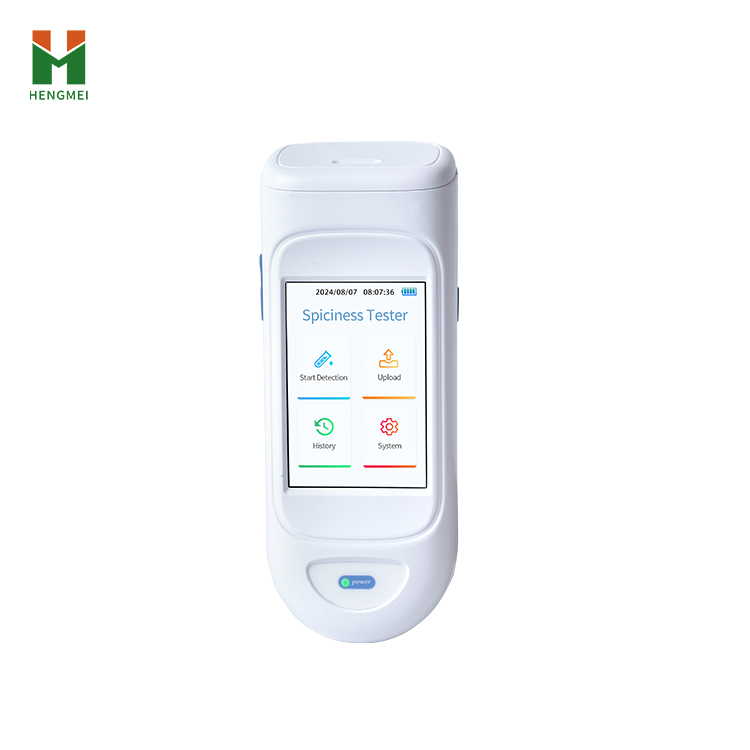As a core quality indicator of chili peppers and their products, spiciness directly affects food flavor, consumer experience, and product pricing. Traditional spiciness assessment relies on artificial sensory tasting, which has problems such as strong subjectivity, poor reproducibility, and high health risks. The handheld spiciness detector, based on electrochemical sensing technology, achieves rapid and accurate quantitative detection of capsaicin content, providing a scientific and efficient solution for pepper cultivation, food processing, quality supervision and other fields.

Technical principles
The core technology of the handheld spiciness detector is based on electrochemical analysis method:
1. Capsaicin enrichment and reaction
Using a disposable three electrode system, capsaicin is enriched on the surface of the working electrode and undergoes redox reactions at a specific working voltage, generating a current signal.
The intensity of the current signal is directly proportional to the concentration of capsaicin, and quantitative analysis is achieved by measuring the peak current value.
2. Spicy conversion model
Capsaicin content (mg/kg) is converted to Scoville index (SHU) at a ratio of 1:16 (1mg/kg=16SHU).
The detection range covers 2-1.5 million SHU, ranging from bell peppers (nearly 0 SHU) to the spiciest Carolina Reaper chili peppers (2.2 million SHU).
Technical advantages
Compared with traditional methods such as HPLC or sensory evaluation, handheld spiciness detectors have the following prominent advantages:
1. Efficient and fast: The single detection time is less than 1 minute, and the efficiency is 4 times that of enzyme immunoassay, supporting real-time decision-making on site.
2. High precision and repeatability: The resolution reaches 5SHU, and the repeatability RSD is ≤ 5%, meeting the industry's precise grading requirements.
3. Portability and ease of use: Compact design (182mm × 72mm × 50mm), lightweight, supports outdoor and production line use; 3.5-inch touch screen, Android intelligent system, built-in Pinyin input method, intuitive operation.
4. Intelligent data management: stores over 80000 pieces of data, exports Excel spreadsheets via USB interface, supports traceability and analysis.
5. Long battery life: continuous use for 8 hours, suitable for high-intensity detection scenarios.
Application Fields
Handheld spiciness detectors are widely used in the following scenarios:
Chili cultivation and trade: classification of spiciness during harvest period, pricing reference (such as subdivision of dried chili peppers in the range of 30000 to 150000 SHU).
Food processing: seasoning formula control, product quality consistency assurance (such as standardized spiciness of hot pot base).
Catering industry: ingredient inspection, labeling of dish spiciness (such as unified management of taste in chain restaurants).
Quality supervision: Market supervision departments conduct random inspections, crack down on counterfeits, and safeguard rights (such as identifying counterfeit chili powder).
The handheld spiciness detector innovatively solves the core pain points of spiciness detection in terms of timeliness, objectivity, and cost through electrochemical technology. Its portability, intelligence, and precision make it an important tool for the chili industry from cultivation to consumer terminals.
Address of this article:http://www.hmfoodtesting.com/article/165.html


 Current
location:
Current
location:





